This is a question many people are wondering about. The short answer is yes, you can use knitting patterns for Tunisian crochet. Let’s explore this a bit together.
The long answer is a little more complicated. It depends on a few factors and we’ll explore them in this article.
In this article I will not discuss graphs or mosaic knitting/crochet, as colorwork can be used in any craft and is not specific to one or the other.
Why do you want to use knitting patterns for Tunisian crochet?
The most important question is why you’d want to do this in the first place, as there are many beautiful Tunisian crochet patterns out there already and the all play on the strengths of Tunisian crochet.
One reason might be that there aren’t enough lace patterns in Tunisian crochet, as there are mostly just lacy stitch patterns.
In knitting, there are thousands of lace patterns that you might be able to translate into Tunisian crochet. Might being the important word here.
Another reason might be that you really love the look of knit fabrics, but love crochet, can’t knit or don’t want to lean to knit.
You might want to explore the possibilities still untouched in the untamed land that is Tunisian crochet.
Maybe you want to experiment with Tunisian crochet stitches and could use the structure from existing knitting patterns
There are many other reasons, but for me these are good enough.
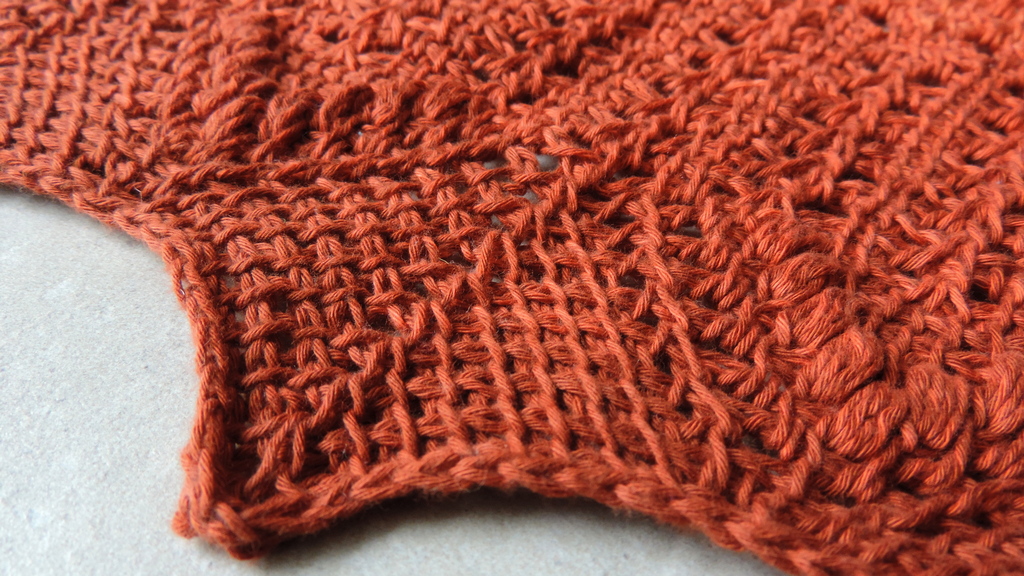
Similarities and differences between knitting and Tunisian crochet
In order to understand what makes it possible for you to use knitting patterns for Tunisian crochet, we must first understand the similarities between the two crafts.
We also need to explore their differences, so we have an understanding of the limitations when trying to translate a knitting pattern into Tunisian crochet instructions.
You already know that in both knitting and Tunisian crochet we pick up loops on a long stick (with or without a hook on the end) and then we work these stitches in a specific pattern.
In knitting, we travel with the yarn back and forth to create a fabric, trapping the loops into each other. The loops are not stable, if you drop one off your needle, all the loops under it might unravel.
In knitting, we only cast off at the end of the project or the end of the piece in a project.
In Tunisian crochet, we build up the loops on a long hook, but we also cast off after every row. This locks the stitches in place and prevents them from unraveling if you drop a stitch.
This also means that in Tunisian crochet we have a forward and return pass, both of them showing on the front or the back of the work.
In knitting, there are only forward passes (you only work from right to left if you are a righty, from left to right if you are a lefty), which makes the stitches shorter than Tunisian crochet stitches.
When working in simple flat knit lace (not circular), you might consider the purl row as a “return pass”, but it isn’t a true return pass, as understood in Tunisian crochet. Besides, there are many knit lace patterns that have various stitches worked all rows.
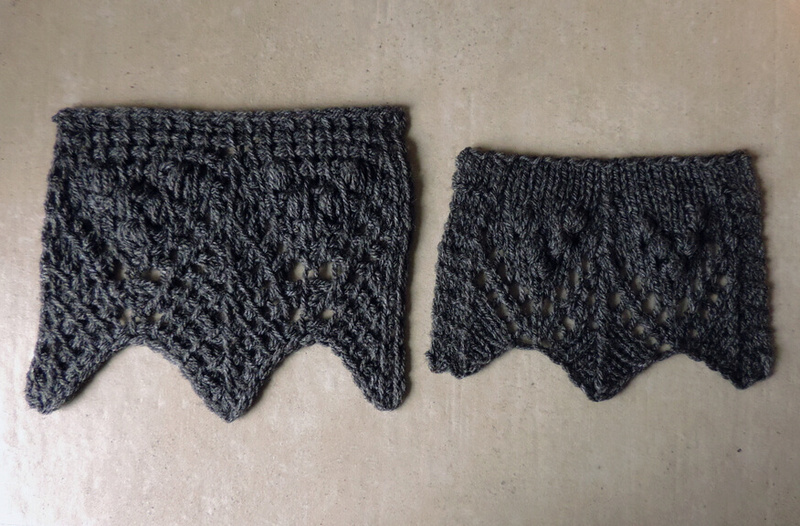
The different construction of the fabric in these two techniques means that the same stitch pattern, even when all the stitches that you need are available, will look very different in terms of the actual finished fabric, the size, thickness, even the way the different stitches look.
Just see the image above, where I used the same pattern (Tss for the knit stitches) and worked in both techniques. The size difference comes first from the hook size (5 mm) which is much larger than the needle size I used for the knit sample (3 mm).
But you’ll also notice that the fabric doesn’t look the same. Even if I’d used knit stitches in the Tunisian crochet sample, there would still be glaring differences.
In Tunisian crochet you also have the added complication of working stitches together on the forward pass or on the return pass. The two methods will give different results, so you need to keep that in mind.
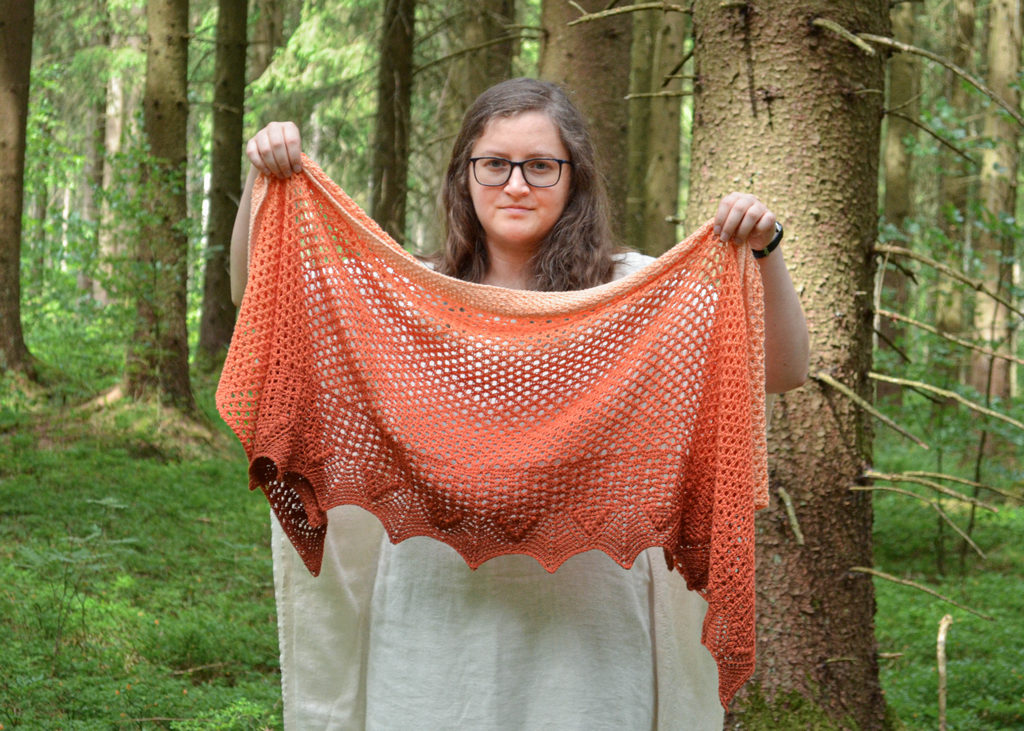
And I didn’t even mention the double-ended hooks that are also available for Tunisian crochet.
In knitting you can work circularly by using either double-ended needles or cabled needles.
You build stitches on top of one-another and you can do the same with Tunisian crochet, except in Tunisian crochet you only cast off stitches if you go in one direction.
You can also return with the other end of the hook and create a reversible pattern.
Limitations in translating knitting patterns to Tunisian crochet
The limitations arise from the unique characteristics of each craft.
While you can replicate many knit stitches with Tunisian crochet, some you might not be able to.
Knit and purl stitches don’t have the same function in Tunisian crochet as in knitting
In knitting, they are opposites of each other. The back of one looks like the front of the other, which makes them the perfect companions in creating reversible patterns.
You use purl stitches on the back of a fabric, for example, to give the appearance of knit stitches on the front of the work.
If you work an even fabric with knit stitches on one side, purl stitches on the other (stockinette), you will get a fabric that tends to curl towards the knit stitches.
In Tunisian crochet, the knit stitch is much shorter than the purl stitch. They look similar on the back (not identical, the knit stitch has larger bumps on the back), so they are not the reverse of each other.
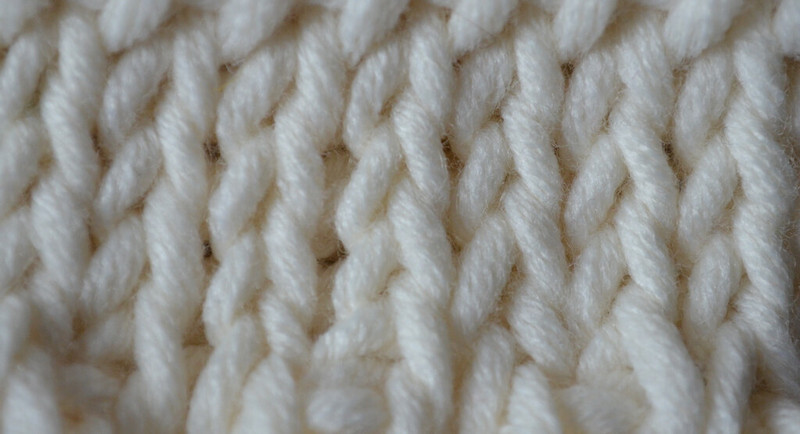
Tunisian crochet knit fabric curls, while the same fabric created with purl stitches doesn’t curl.
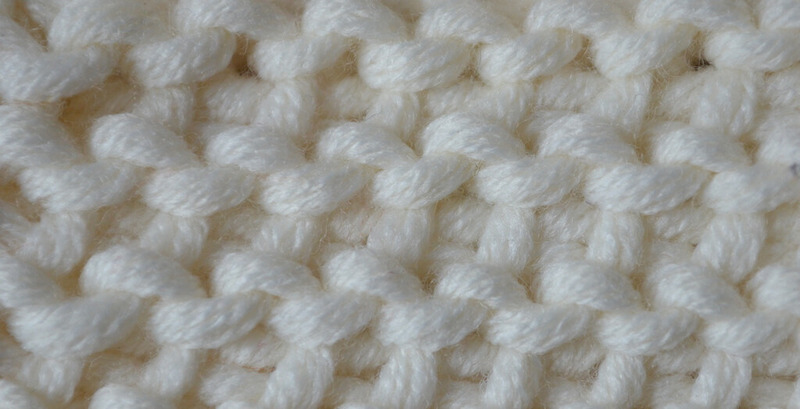
If you want reversible stitches, you need to work reverse Tunisian crochet stitches. Meaning that you replicate the stitch, but from the back of the work and with the yarn on the opposite side of the hook.
For example, the reverse Tunisian crochet knit stitch should be the opposite of the Tunisian crochet knit stitch.
You need to keep these details in mind when translating a pattern.
Eyelets are not the same in knitting and Tunisian crochet
In knitting, eyelets are created using yarn-overs. One eyelet is a single loop, a single strand of yarn.
In Tunisian crochet, eyelets are also created using yarn-overs on the forward pass. But they must be cast off like every other stitch, so they will always have a thick edge.
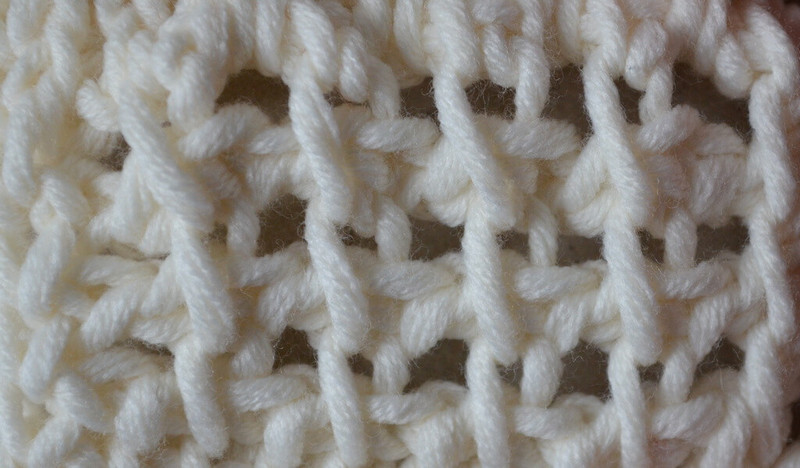
This is just the nature of Tunisian crochet and I know of no alternative (if you know one, please let me know in the comments, I love learning new techniques).
So eyelets in Tunisian crochet will always be smaller and less dainty than in knitting. You need to keep that in mind, again, when translating patterns.
Puff stitches are not created equal
In knitting, puff stitches are called nupps. No idea why, they just are. The first time I encountered them in a pattern, it took me a while to figure out what they are.
Once I realized that they are puff stitches, everything started making more sense.
You finish them while working on the next row, by creating a stitch through all the loops at once.
In Tunisian crochet, you have multiple ways of creating puff stitches and multiple ways to finish them, too.
You can work them around the front post of the stitch below (simple-stitch-style) or through the stitch below (knit-stitch-style). The placement you choose will influence the way the puff or bobble sits on or in the fabric.
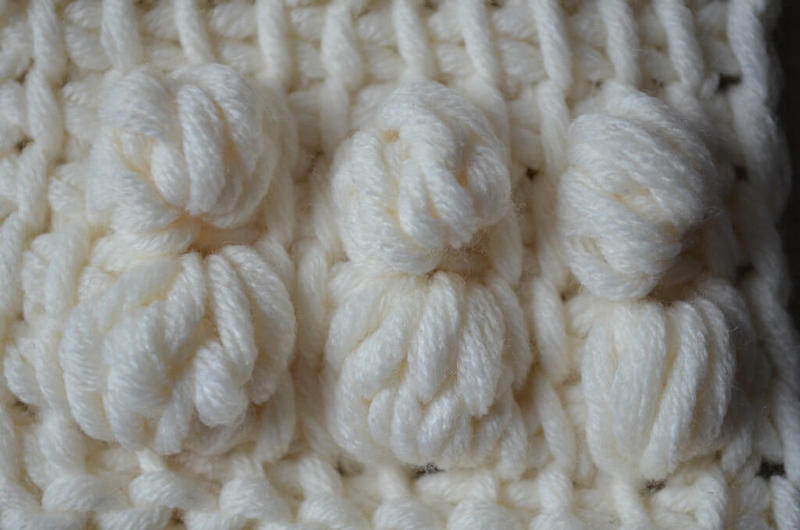
If you work simple-stitch-style, the puff or bobble will on top of the fabric, leaning to one side (the non-dominant side, left for right-handed crocheters and right for left-handed), like in the photo above.
If you work knit-stitch-style, the puff or bobble will be embedded in the fabric and will sit upright.
You can make the puffs with yarn-overs (actual puff, just like in crochet), with extended stitches (a kind of bobble), or with double stitches (bobbles).
Then, to finish them off, you can wait until the return pass, which will have them sitting upright, or you can finish them off during the forward pass, which will make them lay horizontally.
So many options!
But wait, there is more!
Because in Tunisian crochet we use hooks that are much thicker than the yarn, the plain puffs don’t come out as cute and dainty as if we were to use the hook size recommended for the yarn.
In regular crochet, puffs are usually made with tall loops. But in Tunisian crochet you need to keep the loops short, or else you’ll end up with weird, loopy puffs that move around (ask me how I know this).
Or choose to make bobbles instead. But that will change the appearance of the fabric… Which means that you will always have to compromise.
From all the examples I showed above, I think I prefer the extended stitch, worked simple-stitch-style and finished on the forward pass. It’s cute and not too big.
Working stitches together – decreases
In knitting, you have directional decreases. You can knit two together, or slip-slip-knit. They are reversed in Eastern-European style of knitting, so I prefer to call them decrease towards the left and decrease towards the right.
The direction comes from the stitch that is on top, either the stitch on the right (decrease towards the left) or the stitch on the left (decrease towards the right). In words it sounds confusing, but in practice it’s very easy.
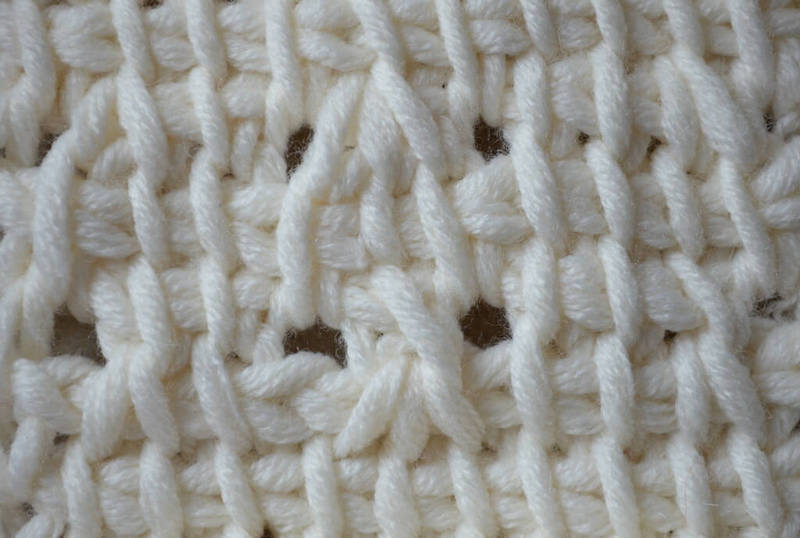
In Tunisian crochet you can also have directional decreases, but they are created completely differently. You can make them on the forward pass or on the return pass.
Assuming you are a righty, for a decrease towards the left, you insert the hook from the right into the following two stitches.
For a decrease towards the right, you insert the hook from the left into the following two stitches. That means going backwards into the stitches.
Most of the time, though, you might not need to use directional decreases with Tunisian crochet, as the stitches tend to fall in line with the direction they need to based on the shape you’re going for.
So don’t worry about directions, worry whether you need to use forward pass or return pass decreases.
If you decrease on the forward pass, the decrease will appear to be on the row below your current work. If you decrease on the return pass, the decrease will appear in the current row, but you’ll need to work through both loops on the next row.
Confusing, right? Maybe the photos will illuminate this a little.
Increasing doesn’t translate
Just like with decreases, increases in Tunisian crochet are a bit different from increases in knitting.
Setting aside the yarn-overs, which are the easiest way to increase, there are many options both in knitting and in Tunisian crochet.
In knitting, you can make a new stitch in between the worked stitch and the next one, you can make lifted increases both on the left and right side of the next stitch. I actually don’t know other increases…
Ah yes, you can work multiple times into the same stitch, using the front leg and the back leg of the stitch.
In Tunisian crochet you have at least as many ways. Let’s see.
- You can make a full stitch (picking a loop in the next space between stitches), or make a stitch in the horizontal bar between the stitches.
- You can twist the stitch you just made and put another stitch in there.
- You can do lifted increases by working a stitch into the stitch below the one you just worked.
- You can make a double crochet stitch or an extended simple stitch into the stitch below the one you just worked.
These are some of the options for the forward pass. Please comment below if you know other increases in Tunisian crochet.
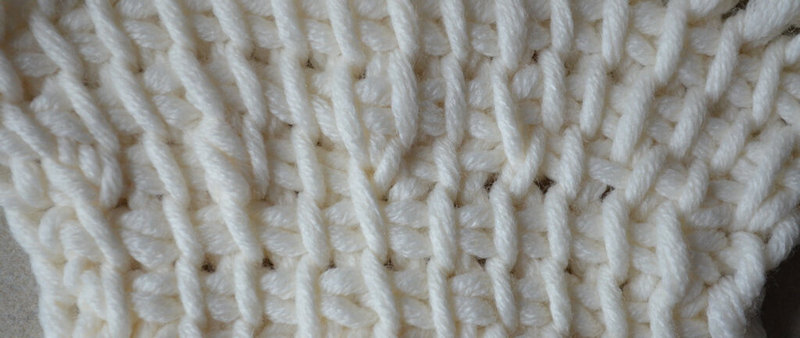
Try to find all the mentioned increases in the swatch above, or try it out yourself and see what each looks like and what knit increase each of these could replace.
There are also return pass increases. You can make chains on the return pass to increase. This is used in several lace patterns in Tunisian crochet.
You need to choose your increases carefully, if you want to match the original pattern. But you could also try out something different, why not?
Size differences between knitting and Tunisian crochet
This might be the most important aspect in using a knitting pattern for a Tunisian crochet project.
Size and proportion are important, especially for garments, but also for project planning.
Tunisian crochet stitches take up more yarn, but are also larger and have a different shape from knit stitches. They also usually require larger hooks than those recommended for the yarn.
So if you are planning on making a garment, always swatch. I cannot stress this enough.
You need to swatch to see how much of the height of the garment pieces to eliminate (unless you are OK with a coat with knee-length sleeves) and how to reorganize the elements of the garment on the pattern pieces (assuming it’s not just plain rectangles).
You also need to swatch to see how the stitch pattern will look with Tunisian crochet. If you hate it, at least you will have lost one hour of work, not forty. Trust me on this.
It’s not just about the height, it’s also about the width, plus all the shaping. Shaping over 30 rows is different from shaping over 20-25 rows, so you also need to be aware of that.
Now, if you’ve read this far, you should be quite prepared to transform some knitting patterns into Tunisian crochet.
But should you translate knitting patterns into Tunisian crochet instructions?
Or a little discussion on ethics.
If you’ve found an amazing knit pattern that you bought and would like to translate it into Tunisian crochet for your own use, go ahead, have fun with it.
But if you’re a designer and planning to use a knit design and just translate the terms and instructions into Tunisian crochet terms and start selling it, that’s a big no-no.
There is a larger discussion to be had on copyright and how much is actually protected by copyright. I might get into that in another article.
But in this case, copying a design idea and just translating it into another craft doesn’t meet the originality criteria that we should all respect when creating designs (and sadly there are still many people out there not respecting their fellow designers…).
You can definitely use generic motifs and construction tricks, like specific increase counts for a raglan, or a chevron, a leaf motif and so on.
But even with those, do you really want to be the designer known for “those generic patterns”? I doubt it (I mean, I won’t judge you if you do, there’s nothing wrong with generic, it’s just extremely boring).
You can also add your own flair. A detail here and there. A shape tweak, a little more texture. Less texture. More holes. Bigger hook.
I don’t know, there are so many things you can do to even the most boring generic motif, that I can’t even imagine them all.
But don’t stop there. Explore, try things, things that don’t make sense in your mind, that’s the joy of being a designer. Not translating patterns from other people.
Final thoughts
These are all my ideas and experiences regarding working with knitting patterns and translating them to Tunisian crochet.
I’ve actually used some knitting patterns to learn an edging technique, personalized it, then used it in my latest design, the Crisp Peach wrap.
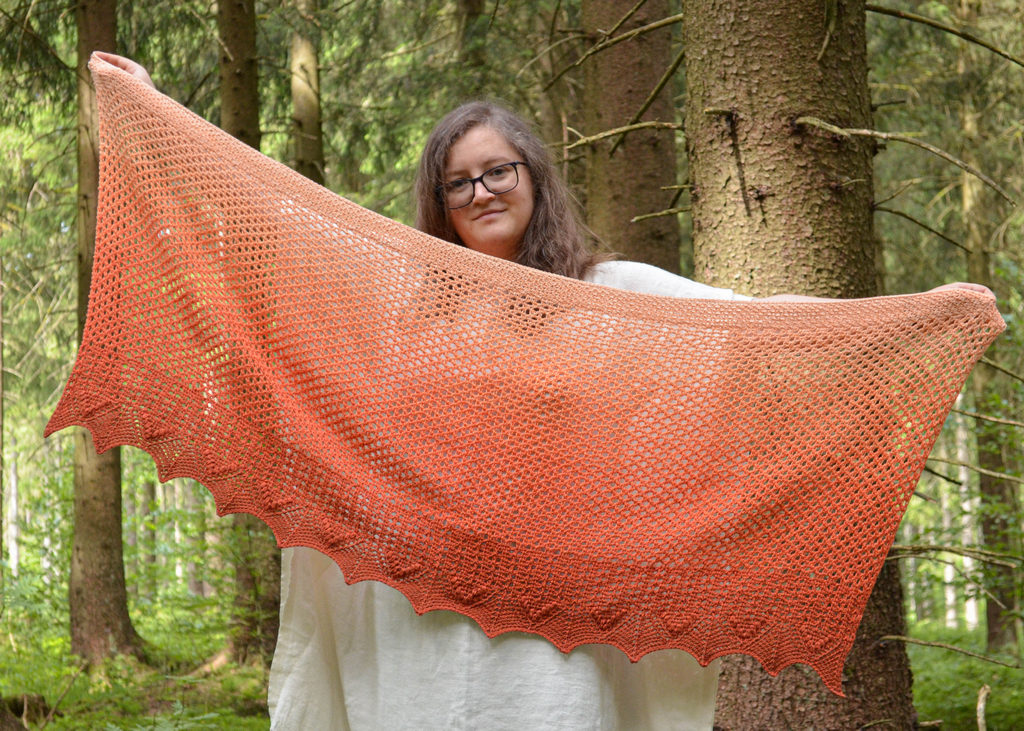
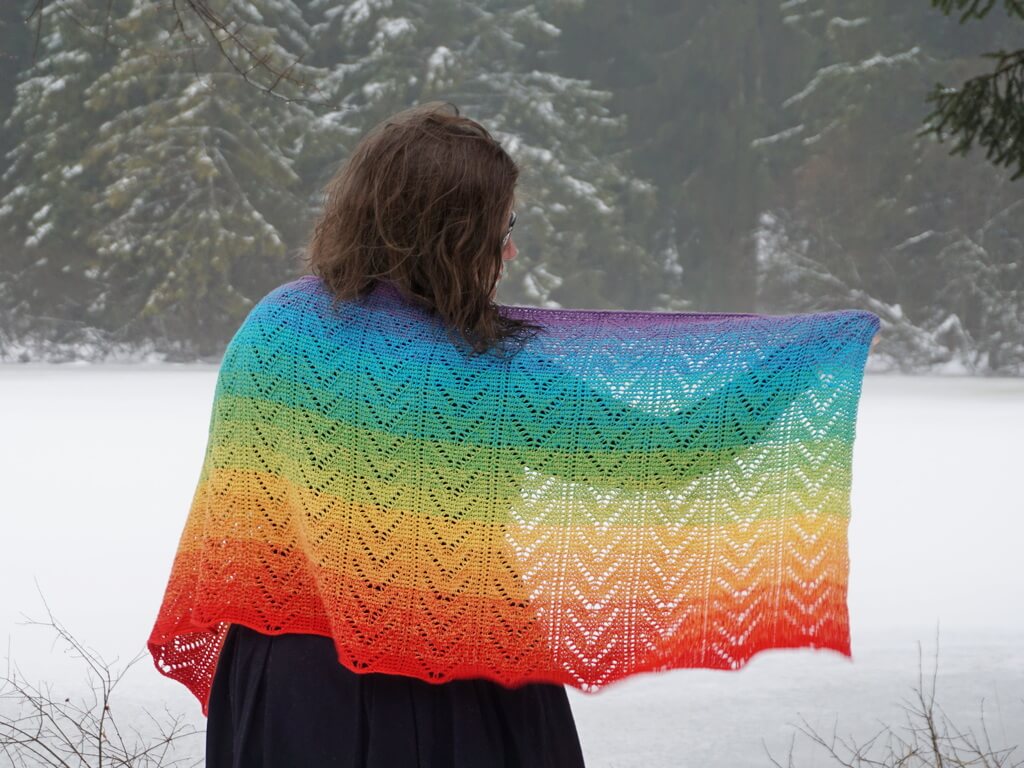
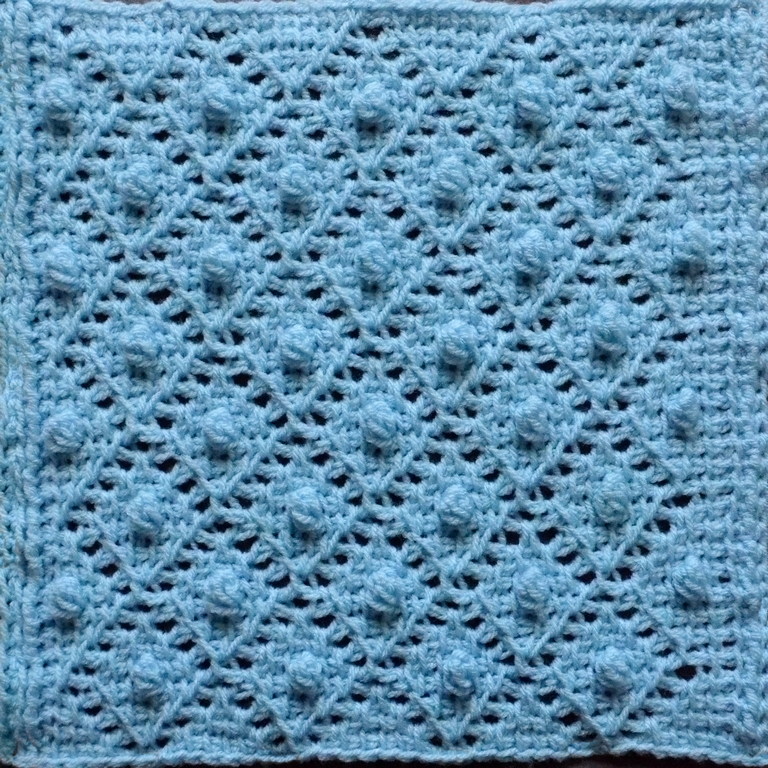
I’m still at the beginning of my journey of learning from the world of knitting and creating my own patterns using that knowledge, but that’s the fun in my work.
If you have any other observations regarding these two crafts and the connections between them, make sure you write them down in the comments, so everyone can see them.
And if you know of any Tunisian crochet designs that were inspired by a knit design, drop a link below and I’ll make a little round-up article with these patterns.
If you want to check out some other articles that I wrote for crochet designers, explore them below:
Designing a crochet pattern – my entire process
Project diary – Calliandra round yoke top
Frilly summer top in Tunisian crochet – project diary
Slate etching Tunisian crochet sweater – project diary
Sempervivum shawl – project diary
How to remove sizes quickly in crochet or knitting patterns
Body measurements for garment design – survey results April 2023
Size inclusive body measurements for crochet garment design
Macaw wings shawl design process
Why you should make your digital products more accessible and how
As always, thank you for being here and reading this article. I hope it was helpful.
Hugs,
Andrea
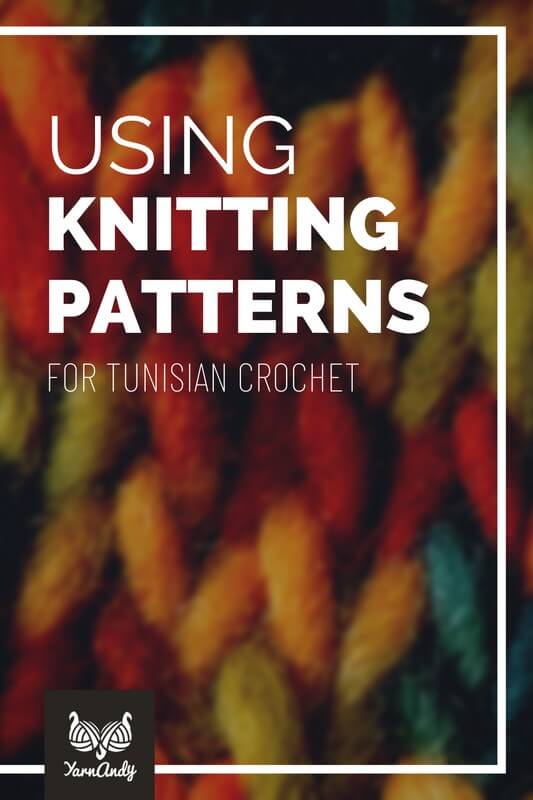

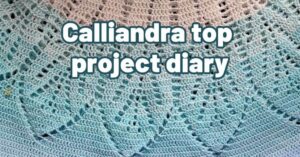
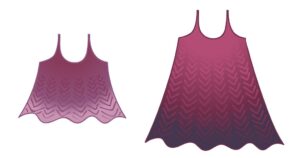

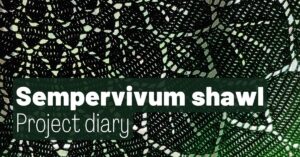

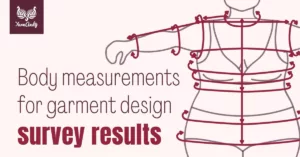
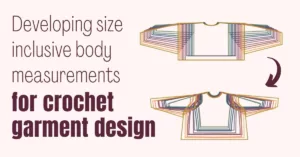
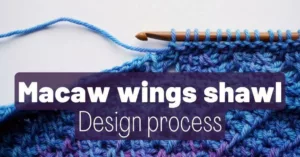

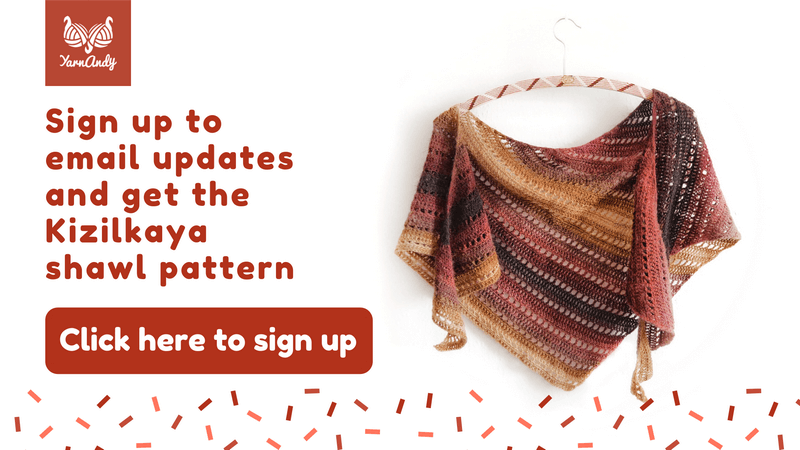
Hi, interesting article. I am older and have arthritis in my hands/wrist. I find that Tunisian crochet doesn’t cause as much pain as crochet or knitting. So, I am making very small Amigurumi items (not shawls) and was hoping for help in converting the cute knit Amigurumi pattern so I could do it with my Tunisian hook.
Hi Susan! Converting amigurumi patterns directly won’t work because of the different size of the stitches.
But I have some good news, there is a designer who’s made a couple of patterns worked in the round with a double ended hook, maybe try those first and then use them to make other shapes as well. There’s a bunny and a mouse.
Beautiful article, very detailed. Thank you so much Andrea and best regards from Argentina.
Thank you!
Thank you so much for this interesting and informative article. You have given me much food for thought. Not to look for a simple pattern to try my hand at.
You’re welcome! If you let me know what kind of pattern you’re interested in, I might be able to make some suggestions.